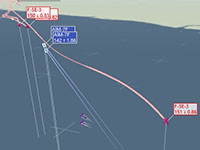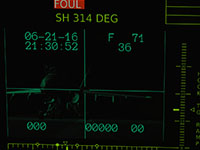

Training is an important part of Virtual Carrier Air Wing one. It is in no small part one of the biggest reasons for why we're such a close knit group, and is the core reason for why we consider ourselves more of a "milsim" virtual squadron rather than more of a casual combat sim community. It's also important to note that, for us, our training program is not a be-all, end-all situation - even after a new recruit completes our training program there will be constant training to keep one's skills sharp, learn new procedures and operations, and practice old and new aircraft systems. While it's certainly true that most people, when searching for a virtual squadron or wing to join, see a required training program as an impediment or necessary evil to simply get through so they can "blow stuff up," it's important to understand that, for us, training is not just about going through the "same old stuff" before a recruit can fly campaign missions with us.
Listed below are the three main reasons why training is so important to what we do, and who we are.
1. It lets us get to know you, and you us
This may sound like a strange point, but it's an important one. Not every online community is the right fit for everyone - personalities may not mesh well, procedures and training demands may be more than the recruit expected or can manage with their daily life, or any number of other issues. Our training program gives you, and us, the opportunity to get to know one another, and to find out if we're the right group for you.
2. It trains you in how we operate
This is an important point as well - every online virtual squadron operates differently. Our training program offers you the experience to see exactly how we operate as a group, what's expected of every pilot, and the procedures required for flying within a flight, around the carrier, and under any other condition. Yes, we utilize NATOPs procedures as much as possible, but we have our own method of operating within those parameters based upon practical use and simulation restrictions.
3. It builds upon learned knowledge
Perhaps seemingly obvious, but our training program is designed to build upon the skills learned in a building block process. Even veteran combat simulation pilots benefit from our training program as it touches upon aspects of flying that are ignored by other groups or are not necessarily focused upon as much. We value not just the combat and action, but the flying and the procedures of flying just as much. Proper flight procedures, landing patterns (on both land and over the boat), and correct and concise radio communication are just as important as dropping bombs and shooting missiles to us.
There is one additional point that is important to note here. Everyone goes through our training program. Everyone. Every pilot in our community, from our CAG and Administration group down to our most newly frocked recruit graduate has gone through our training program. No one is exempt. You can be certain that every other pilot in Virtual Carrier Air Group One has undergone the same program and flown the exact same training guidelines as you will.
The Virtual Carrier Air Wing One Training Program

So, how exactly does our training program work? What do we do that might be similar or different to other virtual squadrons?
To put it simply, our program is designed to get new recruits flying with us quickly and efficiently. It is expected that the recruit already be familiar with flying and the basics of such, as well as with the F/A-18C itself - we don't start pilots off from the ground up (although we can if that's necessary). We do not feel that an extensive, months-long training curriculum is beneficial to either us or to you as a recruit. Our training program can be completed within 60 days - if the recruit is dilligent and can fly and schedule repeated training sessions it's possible to complete our training program much quicker than that. And while it may seem at first that such a quick training curriculum might not sound as robust as some others out there - and as such, you may be missing out on some things - this is not the case; our focus on training is just different than other DCS communities.
Our Training Process
The Virtual Carrier Air Group One training curriculum is broken up into five main areas of learning, or "Blocks," that are designed to teach the fundamentals of flight operations we feel are important. These blocks consist of the following:
Block 1: Our Orientation training block, getting new pilots set up with our Wing's skin installation, SRS installation and setup, and basic radio communication.
Block 2: Our Navigation training block, which covers manual waypoint entry, situation awareness, TACAN navigation, and aerial refueling.
Block 3: Our Air to Air Weapons training block, which covers RWS and TWS radar operation, the use of air to air weaponry, and an introduction into the overhead break.
Block 4: Our Air to Ground Weapons training block, which covers ground setup, navigating and training on our weapons range, and training on bombs, laser guided munitions, and AGM-65 Mavericks.
Block 5: Our Carrier Operations training block, which covers CASE I and CASE III departures and arrivals, as well as training on tanking with the SB3 Viking.
You might ask why specific air to ground weapons or a more detailed air to air process isn't covered in our training, which is the norm for other training curriculums online in other communities. And our answer would be simple - we believe in learning by doing. Our training program is designed to get the recruit up to speed quickly on procedures and operational flight, and prepare them for flying with us in our campaign missions. We've found that recruits learn specific weapon delivery profiles or procedures much more quickly once they're flying with us rather than in just a training session, so our training is designed to teach the recruit the basics and principles of weapon delivery instead of focusing on single weapon system training that creates a much longer training period (which we feel is counter-productive).
While going through the training program, recruits will be elligible to fly our standard and pick-up flights with us, but will be inelligible to fly our campaign missions until they have completed the training program.
As always, if you have any further questions about our training, the training program we teach, or anything that might not have been covered here, feel free to contact us on our DCS Forum Squadron page.


